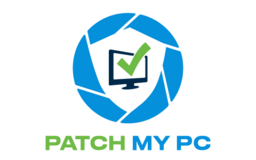
A community where customers and the community can provide feedback to make a better product for everyone! For more details on how we prioritize requests, please see:

A community where customers and the community can provide feedback to make a better product for everyone! For more details on how we prioritize requests, please see:

Packaging the Citrix Workspace app for macOS provides a standardized, automated, and scalable way to deploy, configure, and maintain the application across multiple Macs in an organization. This is essential in environments where centralized IT management is expected, such as in:
Enterprises with remote desktop infrastructure
Schools using virtual labs
Healthcare systems accessing cloud-based EHR
Call centers and BPOs needing secure remote access
Key benefits:
Automated Deployment: No need for manual installations across each Mac.
Consistency: Ensures the same version and configuration across the fleet.
Security: Predefined and locked settings reduce misconfigurations and vulnerabilities.
Scalability: Easily deploy to hundreds or thousands of machines using tools like Jamf, Munki, Intune, etc.
Maintenance: Simplifies patching and updates.
IT Admins/Enterprise SysAdmins: Streamlines workflows and saves time.
Security Teams: Ensures compliance with organizational access policies.
End Users: Gain a working Citrix environment out of the box.
Managed Service Providers (MSPs): Helps maintain multiple client environments efficiently.
Here’s a general overview of how the Citrix Workspace macOS packaging should be structured and function:
Installer Package (.pkg) of Citrix Workspace
Post-install scripts (optional) to apply custom configurations
Configuration profiles (.mobileconfig) or plist files to enforce settings
Should support configuration of:
Default Store URL (e.g., https://company.cloud.com)
SSO settings (e.g., enabling Pass-through authentication)
Auto-updates (enable/disable)
Log upload settings
Receiver cleanup (to remove older installations)
Should be compatible with common macOS deployment tools:
Jamf Pro
Munki
Intune
DEP (Apple Device Enrollment Program)
Regular updates should be scriptable or handled via MDM
Ability to auto-remove older versions during deployment
Support for background updates or prompts
Logging during install to validate deployment
Error reporting to system logs
Ability to integrate with tools like Splunk, if needed